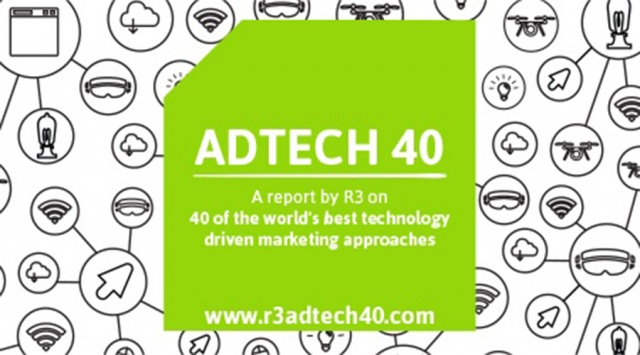
The pace of disruption is accelerating across all industries. Business models introduced by new players have increasingly challenged established brands to rethink everything from their raison d’être to their pricing models and the way they connect with consumers. Examples abound – AirBnB in a way challenged the existence of hotel chains by providing temporary access to property; Spotify has disrupted the world of music with its freemium model, and Tesla reinvented the process of selling cars by creating a rich, interactive and fully-connected customer experience.
As much of this change is clearly enabled by technology, R3 conducted a research study – AdTech40 – with the aim of exploring how technology is driving innovation in marketing. What follows are key take-aways from two R3 Roundtables that recently took place in Shanghai and Singapore, where CMOs and business leaders from diverse industries came together to discuss how to address the opportunities and challenges posed by technology.

Embrace Digital – in life, in marketing, in business
As consumers nowadays increasingly lead digital lives, brands have followed suit. However, simply integrating digital components into marketing campaigns is no longer enough. A key highlight from both roundtables is that embracing digital at all levels is the only successful strategy to succeed in a digital world.
Developing a ‘digital mindset’ and integrating technology into every aspect of the business is now an imperative. Although the shift to digital needs to be both bottom up and top down, there is a clear role for leadership to step in and nurture a digitally-friendly culture within an organisation. Asmita Dubey, CMO of L’Oréal shared her view that “In terms of digitalizing traditional companies, it has to come from the top.”
Take advantage of the latest technology, but always stay relevant to your brand
The number and types of technologies being used in marketing campaigns is increasing – virtual reality, EEG brainwave headsets, and the Internet of Things, to name just a few. Although technology is becoming an indispensable part of almost every major campaign, markers should only adopt technologies in ways that resonate with the brand.
A case in point here is Joe Boxer, partnering with Kmart. Aiming to get the attention of a male, millennial target audience during the low season, the pyjamas company leveraged digital to drive business while being true to its product. It successfully stimulated laziness (and encouraged the purchase of pyjamas) by launching an ‘inactivity tracker’ wristband and an app along with its nightwear.
It’s time to get measurement right
Despite the increasing amount of dollars being dedicated to digital, measuring results still remains a struggle for most marketers. Which metrics will help me determine true return on investment? Are we up-to-date with analytics — for example, using MixPanel, which offers an alternative to Google Analytics by tracking user behavior with fine-grained event data. What is our take on programmatic?
Although some brands and publishers such as the Economist have been successful in leveraging programmatic, it is still a huge concern for most marketers. Tracking firm WhiteOps recently revealed at an ANA conference that non-human activity accounts for 3% to 37% of ad impressions, or $7.2b globally.
As CMOs are increasingly under pressure to prove the ROI from digital efforts, new solutions should be considered. For example, marketing technology stacks have received a lot of attention lately. Arguably the integration of First-Party Analytics platforms (FAPs) with Demand- Side Platforms (DSPs) offers clear advantages, such as more transparency, greater efficiencies in paid media buys and improved ROI. Although first party data has a huge role to play in sophisticated media buying, not many marketers have implemented such technologies in their media buying workflow.
Select the right partners for the digital journey
Not only is the number of agencies specialising in digital increasing, but also the number of technology providers. For example, Adknowledge connects advertisers directly with digital audiences across channels – apps, video, social media and game installs. InMobi and Criteo have specialized in targeting and re-targeting.
As the marketing landscape becomes quite fragmented and complex, identifying and selecting the right partners for the ‘digital journey’ also becomes harder. However, if done right, business results can be impressive, as demonstrated by MasterCard’s Digital and Ecommerce Engine.
In order to be able to make informed choices, marketers need to get well-versed in all things digital. And here we again go back to the argument that a ‘digital mindset’ is the key to successfully navigating the brave new world of marketing.
Iva Lazarova is an Insights Analyst with R3
Source: Marketing Interactive





